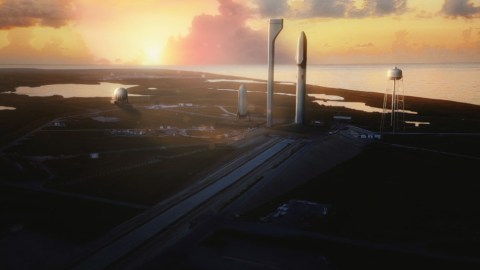Life on Mars: What We Learned From Elon Musk’s Reddit ‘Ask Me Anything’

Elon Musk inspired the world four weeks ago when he announced his ambitious plan to put 1 million people on Mars in 40 years. Naturally, people had follow-up questions. He held a Reddit Ask Me Anything session on October 24th to address them. Here’s what we learned from over 5,500 comments.
The Spaceship Will Be Tough
While Musk feels that bringing the cost of the trip down is the biggest prohibiting factor to creating a Mars civilization, Redditors were more concerned about the technology SpaceX is developing. Specifically, they wanted to know about the sturdiness of the spaceship, the strength of the engines, and the reusability of both.
Regarding the spaceship, Musk replied that the biggest technical concern of the Interplanetary Transport System (ITS) “used to be developing a new metal alloy that is extremely resistant to oxidation for the hot oxygen-rich turbopump, which is operating at insane pressure to feed a 300 bar main chamber. Anything that can burn, will burn. We seem to have that under control, as the Raptor turbopump [engine] didn’t show erosion in the test firings, but there is still room for optimization.” Now? SpaceX’s priorities are different, as Musk explained:
Biggest question right now is sealing the carbon fiber tanks against cryo propellant with hot autogenous pressurization. The oxygen tank also has an oxidation risk problem as it is pressurized with pure, hot oxygen. Will almost certainly need to apply an inert layer of some kind. Hopefully, something that can be sprayed. If need be, will use thin sheets of invar welded together on the inside.
SpaceX is a year or two away from revealing exactly how the ITS will be arranged to accommodate passengers and cargo, but “will aim to release details of the habitation section when we have actual live mockups.”
The CAD model for the Mars spaceship. Credit: SpaceX / IAC
The spaceship will be able to travel to Mars more quickly than the usual 26-month window, which would be handy in an emergency. One Redditor pointed this out by asking if the ship could “be used to fly between Mars and Earth even outside the launch windows enforced by the synodic period [26 months when Mars is closest to Earth’s orbit], when payload mass is not a primary factor? It could be used for emergency purposes such as medical supplies/instruments and experts, or for other high priority but low mass cargo like critical replacements.” Musk had a simple response: “yes.”
The Engines Will Be Powerful
The engines garnered even more interest, as most Redditors were skeptical of their ability to create enough thrust while being used repeatedly. Musk countered that directly:
Final Falcon 9 has a lot of minor refinements that collectively are important, but uprated thrust and improved legs are the most significant. Actually, I think the F9 boosters could be used almost indefinitely, so long as there is scheduled maintenance and careful inspections. Falcon 9 Block 5 – the final version in the series – is the one that has the most performance and is designed for easy reuse, so it just makes sense to focus on that long term and retire the earlier versions.
Raptor testing. Credit: SpaceX / Flickr
One Redditor also asked about refuelling: “What equipment and procedures will be required for refuelling operations on Mars? Will they be designed to function autonomously for the initial unmanned test flight?” Musk responded honestly: “We are still far from figuring this out in detail,” but outlined the current 4-step plan:
Send Dragon scouting missions, initially just to make sure we know how to land without adding a crater and then to figure out the best way to get water for the CH4/O2 Sabatier Reaction.
Heart of Gold spaceship flies to Mars loaded only with equipment to build the propellant plant.
First crewed mission with equipment to build rudimentary base and complete the propellant plant.
Try to double the number of flights with each Earth-Mars orbital rendezvous, which is every 26 months, until the city can grow by itself.
Here’s what all of that should look like:
Credit: SpaceX / YouTube
The Housing Will Be Glass
Musk glossed over this in his IAC talk, so naturally people asked lots of questions about how we’re going to live in Mars. Basically, Musk pictures us living in glass domes: “Initially, glass panes with carbon fiber frames to build geodesic domes on the surface, plus a lot of miner/tunneling droids. With the latter, you can build out a huge amount of pressurized space for industrial operations and leave the glass domes for green living space.” He didn’t give any further information about the kind of glass, but SpaceX is working on it.
It might look something like this, but with glass. Credit: Pacific Domes
There were lots more questions – including one from Colonel Chris Hadfield wondering whether Musk considered Antarctica good training ground for a Mars mission – but Musk didn’t answer more questions. You can scroll through the thread yourself for more specifics on the ITS, but if you want more information about how we’re actually going to live there you’ll have to wait.
Hopefully Musk holds another AMA about that soon.





